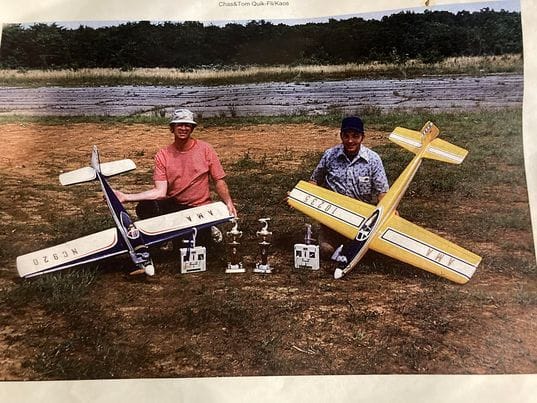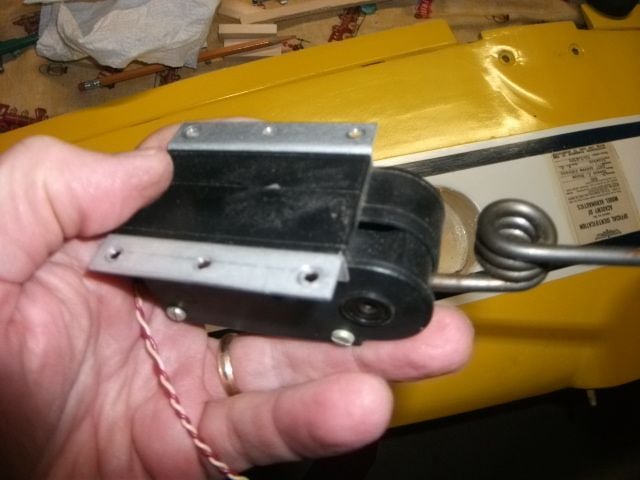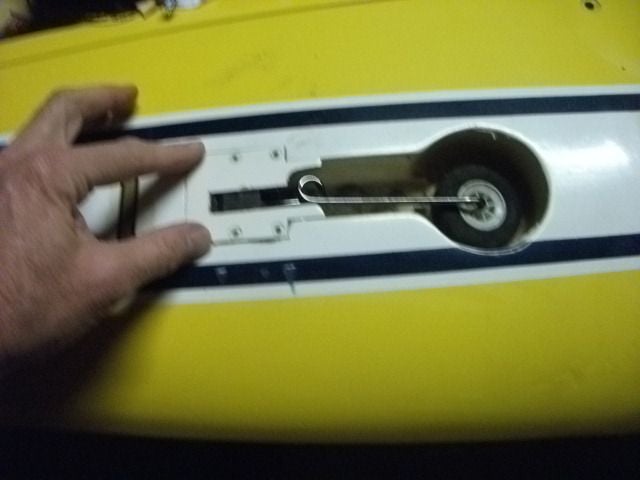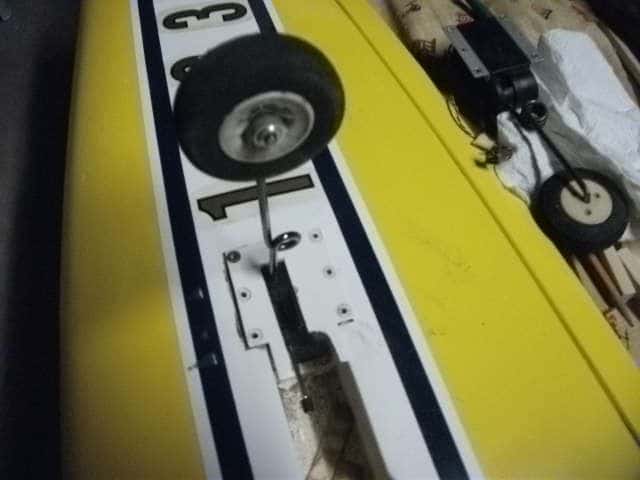Project Kaos
#1
This plane was a gift from a very special modeler at the Kinston Aeromodellers of North Carolina. Back in the early '70's and for many years after, this was a hotbed of competitors. The owner of this Kaos and his flying buddy who had a Kwik Fli were dominating the North Carolina State Championships from 1971 through 1974 +. I have the honor of bringing this plane back to flightworthy condition.

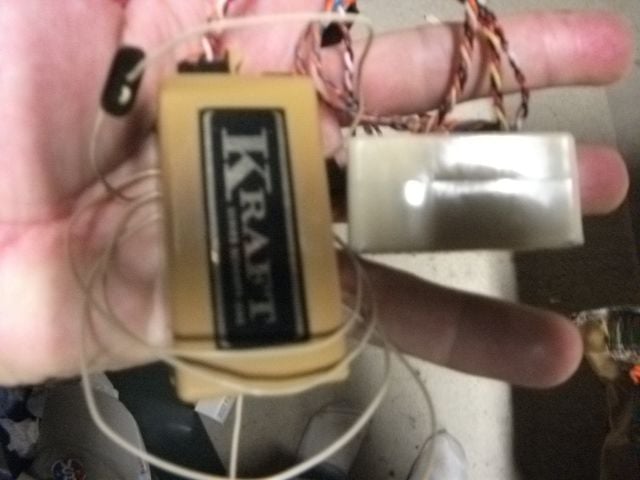
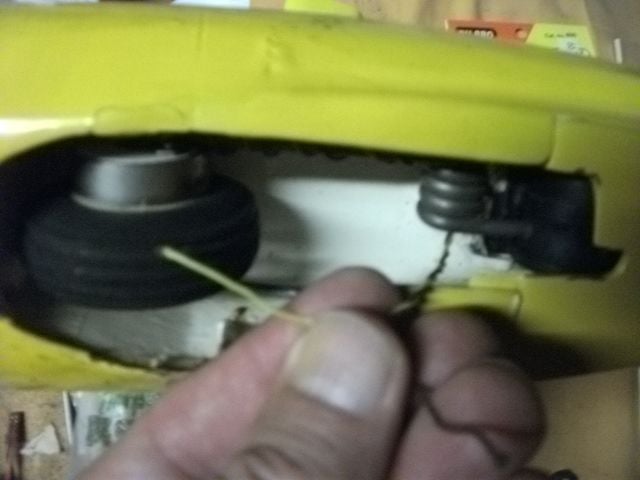



The following users liked this post:
robert440kts (12-04-2023)
#2
The plane had a Kraft radio, Kraft retracts which even had electric brakes. Back then, taxi to takeoff was a judged maneuver and required, along with taxi back after landing and stopping into a spot. I was amazed at the craftsmanship of this equipment given that just 10 years prior to this there were no really practical proportional radios. To see the sophistication that Kraft had for its time was incredible. Notice also the linear drive servos. Each servo had the option of two linear drives or a single rotation drive, which is now the only standard output shaft on all of today's servos.
#3
I found that the paint had some deep stains in the dope/butrate or nitrate dope. I first tried simple rubbing alcohol which quickly took the paint down to the white base coat. I did some testing on different techniques and found that a simple "white eraser" type sponge cleaning pad was very gentle and effective in removing the dirty smudge embedded in the clear coat, while removing very little of the pigmented paint layer. It also worked very well in helping to clean up some of the decals which were also clear-coated with lots of grime and runs in the black adhesive.

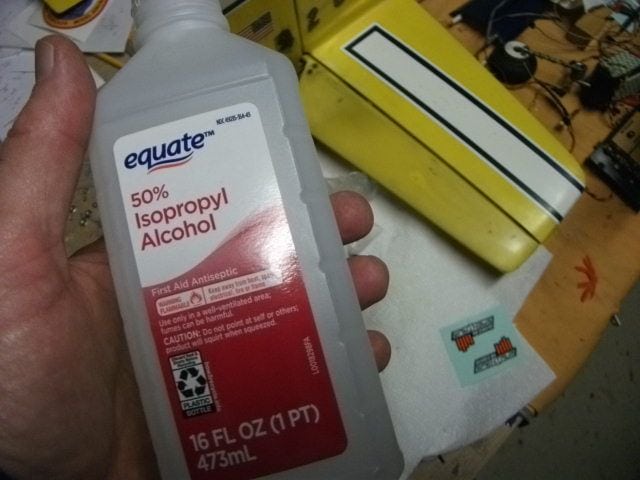
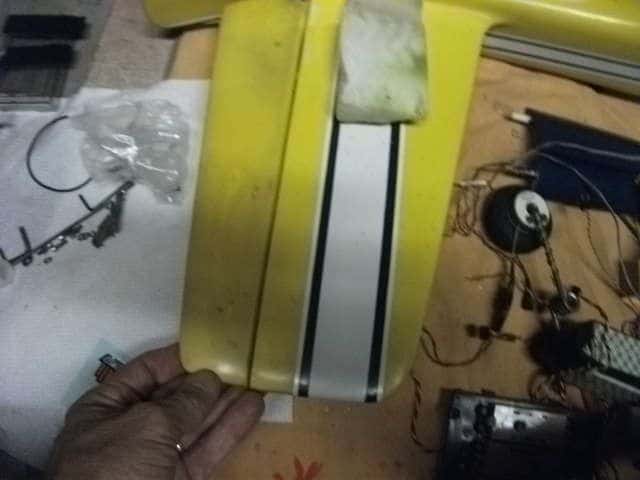

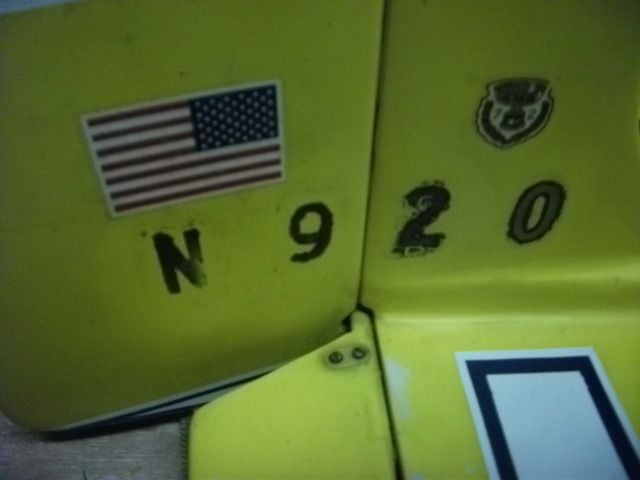





The following users liked this post:
robert440kts (12-04-2023)
The following users liked this post:
robert440kts (12-04-2023)
#5
From the club:
Hi Don! Thanks so much for the updates! Iíll be sure to follow it on RCU.
That is WONDERFUL!!! So glad you have it, I know itís at its rightful new home.
I know it belonged to (the president of our club back in 1974). Iím pretty sure he competed with that airplane in the 70s, not sure if it was a back up or not but glad to hear itís in good shape!
Our current club (KAM - Kinston Aero Aeromodelers) used to be KGAM (Kinston Greenville Aeromodelers - what is on the tail) back at that time and Tom was a founding member/president of the club.
I will talk to another one of our club members who was also around at that time and see what other information I can find out about the airplane.
They flew pattern events together for many years, he had the airplane that you have now and Gerald had the blue airplane that the other fellow got at the pattern contest in Kinston.
So glad to hear from you and look forward to hearing from you soon!
Hi Don! Thanks so much for the updates! Iíll be sure to follow it on RCU.
That is WONDERFUL!!! So glad you have it, I know itís at its rightful new home.
I know it belonged to (the president of our club back in 1974). Iím pretty sure he competed with that airplane in the 70s, not sure if it was a back up or not but glad to hear itís in good shape!
Our current club (KAM - Kinston Aero Aeromodelers) used to be KGAM (Kinston Greenville Aeromodelers - what is on the tail) back at that time and Tom was a founding member/president of the club.
I will talk to another one of our club members who was also around at that time and see what other information I can find out about the airplane.
They flew pattern events together for many years, he had the airplane that you have now and Gerald had the blue airplane that the other fellow got at the pattern contest in Kinston.
So glad to hear from you and look forward to hearing from you soon!
The following users liked this post:
robert440kts (12-04-2023)
The following users liked this post:
robert440kts (12-04-2023)
#7

My Feedback: (1)
Wonderful job DonÖÖ.so glad to see the ol girl getting lots of tlc. Itís looking VERY nice!!
Tom and Charles would be ecstatic knowing that you are refurbishing the Kaos. Lots of history with that ol girl.
Iíll definitely stay tuned in. If I can help in any way donít hesitate to reach out.
Look forward to seeing your progress!
Take care,
Robert
Tom and Charles would be ecstatic knowing that you are refurbishing the Kaos. Lots of history with that ol girl.
Iíll definitely stay tuned in. If I can help in any way donít hesitate to reach out.
Look forward to seeing your progress!
Take care,
Robert
#8
After studying the nose retract gear, I realized there are only two wires. That means only one thing- the retracts work up or down with a simple switch. I found this post on Kraft Retracts within RCU some 20 years ago (2003):
Commet --
Kraft made a couple of different versions of their Multicon Retracts. First, you'll need to determine which version you have.
The older Multicon's can be identified by the color of the leads coming from the amplifier and going to each retract unit. If they're red and white, you have the older Multicons. If the leads are red and black, you have the newer (and more desirable) ones. Also, the lead which plugs into the reciever is a 4-wire lead on the older amplifier - the newer one has only a 3-wire lead. And, the working voltage is different - the old units use 2.4 volts, while the newer ones use 4.8 volts. Because of this, the 4-wire plug, 2.4 volt version is only compatible with a few radio systems (older Kraft 4-wire systems, Heathkit, and PCS). So, you can't hook up the older amplifier to a modern 3-wire receiver.
If you DO have an older set, they CAN still be used with a modern receiver - you just cannot hook them directly to the 5th (or, "retract") channel of the receiver. You will either have to make a mechanism where your 5th servo will manually operate a switch which controls the direction ("up" or "down") of the retracts, or set up a switch that can be activated by the throttle pushrod with "high" and "low" throttle trim set to activate the switch. Then you'd need to wire in a separate battery pack to the switch to provide the 2.4 volts. By using the throttle trim method, the units can actually be used with just a 4-channel radio. But obviously, if you have the newer set, it's a whole lot easier to just be able to plug the units directly into your 5th channel on the receiver.
If you have the newer set, simply cut off the original Kraft 3-wire plug and splice on the plug that matches your modern receiver. I use mine with Futaba gear and for that, you just match up the red to red wires, black to black, and Kraft's orange wire to Futaba's white wire. Plug into the 5th channel of the receiver, power the receiver and transmitter on, and hit the retract switch on the transmitter. The retracts are powered directly from the 4.8 volt reciever pack. It doesn't require a separate pack. However, remember that you are now adding additional load to your whole flight pack, so I'd recommend going to a larger pack - perhaps 800 mah.
Information on one sheet of the instructions state the units are, "Fully enclosed and self-contained within a very rugged and light reinforced nylon case, it is virtually indestructible and fuel-proof".
But you must take care that the retracts aren't accidently activated with the model sitting on the ground. Kraft's instructions also state, "The gear train is protected from shock and damage only in the up or down position. Therefore exercise care while the gear is moving from one lock to the other. Great care should be taken to make sure the transmitter is not turned on with the landing gear channel in the retract position while the model is sitting on the ground. If this happens, the gear will retract under the load of the model and the unit's gearing may be damaged."
Hope this information helps. If you'd like a copy of the manual (once you've determined which set you have), let me know. I'll Xerox one and mail it to you.
Linclogs
Commet --
Kraft made a couple of different versions of their Multicon Retracts. First, you'll need to determine which version you have.
The older Multicon's can be identified by the color of the leads coming from the amplifier and going to each retract unit. If they're red and white, you have the older Multicons. If the leads are red and black, you have the newer (and more desirable) ones. Also, the lead which plugs into the reciever is a 4-wire lead on the older amplifier - the newer one has only a 3-wire lead. And, the working voltage is different - the old units use 2.4 volts, while the newer ones use 4.8 volts. Because of this, the 4-wire plug, 2.4 volt version is only compatible with a few radio systems (older Kraft 4-wire systems, Heathkit, and PCS). So, you can't hook up the older amplifier to a modern 3-wire receiver.
If you DO have an older set, they CAN still be used with a modern receiver - you just cannot hook them directly to the 5th (or, "retract") channel of the receiver. You will either have to make a mechanism where your 5th servo will manually operate a switch which controls the direction ("up" or "down") of the retracts, or set up a switch that can be activated by the throttle pushrod with "high" and "low" throttle trim set to activate the switch. Then you'd need to wire in a separate battery pack to the switch to provide the 2.4 volts. By using the throttle trim method, the units can actually be used with just a 4-channel radio. But obviously, if you have the newer set, it's a whole lot easier to just be able to plug the units directly into your 5th channel on the receiver.
If you have the newer set, simply cut off the original Kraft 3-wire plug and splice on the plug that matches your modern receiver. I use mine with Futaba gear and for that, you just match up the red to red wires, black to black, and Kraft's orange wire to Futaba's white wire. Plug into the 5th channel of the receiver, power the receiver and transmitter on, and hit the retract switch on the transmitter. The retracts are powered directly from the 4.8 volt reciever pack. It doesn't require a separate pack. However, remember that you are now adding additional load to your whole flight pack, so I'd recommend going to a larger pack - perhaps 800 mah.
Information on one sheet of the instructions state the units are, "Fully enclosed and self-contained within a very rugged and light reinforced nylon case, it is virtually indestructible and fuel-proof".
But you must take care that the retracts aren't accidently activated with the model sitting on the ground. Kraft's instructions also state, "The gear train is protected from shock and damage only in the up or down position. Therefore exercise care while the gear is moving from one lock to the other. Great care should be taken to make sure the transmitter is not turned on with the landing gear channel in the retract position while the model is sitting on the ground. If this happens, the gear will retract under the load of the model and the unit's gearing may be damaged."
Hope this information helps. If you'd like a copy of the manual (once you've determined which set you have), let me know. I'll Xerox one and mail it to you.
Linclogs
#9
P.S., everything else is hooked up (main retracts were substituted for some mechanicals) and the K&B .61 is mounted. All original pushrods to include the aileron horns, just substituted the servos to some compatible with Spektrum. Once I get the nose retract figured out (or substitute a mechanical retract) will post some more pictures.
#10
By the way, was reading through the 1972 Masters Tournament program a lot closer. Wow- what a show. Every pilot was featured. Some very young pilots to include Mike Mueller, Dave Brown, Dean Koger and so many others there in their teens and early 20's. Joe Bridi was there with his original Super Kaos, which I'm sure inspired the builder and pilot of this plane, readied and flown for the 1971 or 1972 pattern circuit based on the documentation.
#11
Finally got all the retracts mounted, original fuel tank (still perfect with all but last segment of fuel tubing!), geometry set and radio programmed. The retracts were set up with an 8 second servo speed to help provide realism to the original Kraft retracts. I may shift to 4 or 5 seconds as I think the 8 second retract cycle is closer to the Rhom Air of the day (with two restrictors in each line, for those who remember them back in the day). The plane flew a the Kinston NC Pattern contest last weekend and it was the center of attention. The club president, who introduced me to this model got to fly it as well. Smooth tracking and locked in feel was incredible. This was a true champion model for 1972 and really world class at that time. The club president asked me to fly the aircraft at some vintage RC and maybe SPA type events to share the story of this amazing model. I think there are videos up on NSRCA D2 and other facebook pages but I'll see if I can post some pictures here. There are some aspects of this model that were ahead of its time- small chin added for improved knife edge, sharp leading edges for spin entry. The plane has NO snap or breaking tendencies. It really feels locked in. Clearly set up before there were dual rates, expo and mixes! Aerodynamics are designed in for reduced pilot workload as compared to many of even today's low wing sport trainers and ARF .60 size pattern planes of the .90's that I recall. Very professionally built Bridi Kaos of 1971 and winner of the 1972 North Caroline Pattern Championships. Its been fun!
#12

My Feedback: (45)
Hi Don,
I recognize that airplane! I was good friends with Tom and Charles while living in Kinston. I went through the Aviation program at Lenoir Community College in the mid seventies and spent two years there. Tom had left Kinston, or was in the process of leaving when I was getting there...going to Nashville to work at Bob Reuthers place I believe. Spent many hours at Charles" house though, talking models and trying to get him out to fly. At that time we were flying behind the college. That is great that you are restoring the model! I flew pattern actively for a while, but lost interest when it went to turn around and concentrated on scale competition. My Tipo is hanging in my cubicle at work. But I am building a Tiger Tail!
Also....I believe I had a Extra that once belonged to you? It was yellow....had changed hands several times. Great flying airplane...should have kept it!
Jeff
I recognize that airplane! I was good friends with Tom and Charles while living in Kinston. I went through the Aviation program at Lenoir Community College in the mid seventies and spent two years there. Tom had left Kinston, or was in the process of leaving when I was getting there...going to Nashville to work at Bob Reuthers place I believe. Spent many hours at Charles" house though, talking models and trying to get him out to fly. At that time we were flying behind the college. That is great that you are restoring the model! I flew pattern actively for a while, but lost interest when it went to turn around and concentrated on scale competition. My Tipo is hanging in my cubicle at work. But I am building a Tiger Tail!
Also....I believe I had a Extra that once belonged to you? It was yellow....had changed hands several times. Great flying airplane...should have kept it!
Jeff
#15
We will be hosting an SPA in conjunction with our pattern contest. Here are details.
https://www.nsrca.us/index.php/list-...-and-spa-event
https://www.nsrca.us/index.php/list-...-and-spa-event





